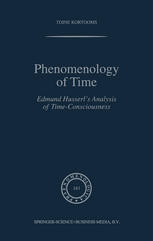

Most ebook files are in PDF format, so you can easily read them using various software such as Foxit Reader or directly on the Google Chrome browser.
Some ebook files are released by publishers in other formats such as .awz, .mobi, .epub, .fb2, etc. You may need to install specific software to read these formats on mobile/PC, such as Calibre.
Please read the tutorial at this link: https://ebookbell.com/faq
We offer FREE conversion to the popular formats you request; however, this may take some time. Therefore, right after payment, please email us, and we will try to provide the service as quickly as possible.
For some exceptional file formats or broken links (if any), please refrain from opening any disputes. Instead, email us first, and we will try to assist within a maximum of 6 hours.
EbookBell Team

4.8
64 reviewsEdmund Husserl occupied himself with the analysis of time-consciousness throughout his life. In this book, the three stages that may be distinguished in Husserl's occupation with this theme are discussed in their interrelationship. The first stage consists of a lecture manuscript from 1905; the second stage consists of the so-called Bernau manuscripts, research manuscripts that were written in 1917 and 1918; and the final stage consists of the so-called C-manuscripts, research manuscripts that were written in the late 1920s and the early 1930s.
Central themes in the discussion of Husserl's phenomenology of time in this book are: the connection between the analysis of time-consciousness and the analysis of phantasy-consciousness and image-consciousness; Husserl's position in the debate between A. Meinong and W. Stern concerning the possibility of the perception of time; the self-constitution of absolute time-consciousness; the influence of Husserl's development of genetic phenomenology on his analysis of time-consciousness; and the question of the intentional character of time-consciousness.